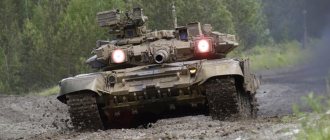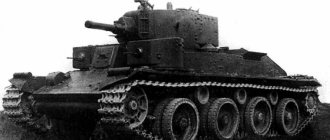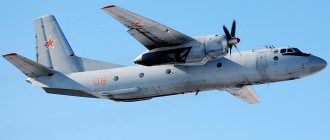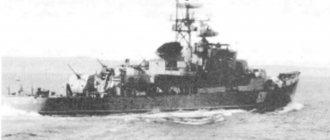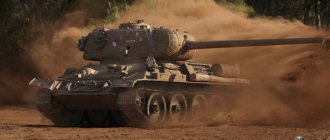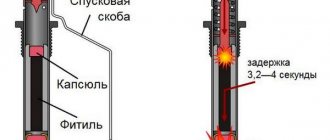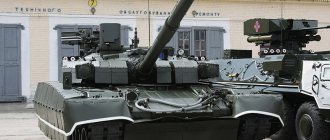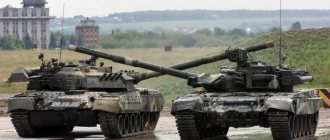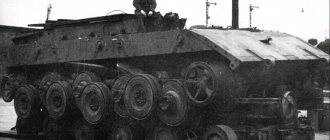Tank troops are the striking force of the ground armed forces. The wax genus is universal: it shows excellent combat performance in both offense and defense and holding the enemy. In wartime, tank brigades carry out counterattacks. Their main advantage is enormous striking power, maneuverability, and the ability to conduct combat operations in difficult terrain.
Modern tank brigades are equipped with combat vehicles with a high degree of protection from enemy fire and the ability to withstand even the use of nuclear weapons.
What kind of tank is this?
The T-14 tank of the Armata project, first presented at the parade in Moscow in 2020, has become for the Russian authorities one of the symbols of Russian military power and the capabilities of the military-technical complex.
At first, it was planned to produce more than two thousand of these machines, and mass production was to begin in 2020, promised the then director of Uralvagonzavod Oleg Sienko.
However, in 2020, Deputy Prime Minister Yuri Borisov, who oversees the defense industry in the government, said that the tank was too expensive. According to him, the first batch of “more than a hundred tanks” began to enter the troops in the same year.
- The Armata tank turned out to be too expensive for Russia, and the T-72 was not that old
The main difference between the T-14 tank on the Armata platform is that its crew is enclosed in a particularly strong armored capsule in the fighting compartment in the tank hull. His tower is uninhabited and controlled remotely.
Image copyright Sergei Bobylev/TASS Image caption T-14 Armata has been a traditional participant in parades in Moscow since 2015
This made it possible to improve the working conditions of the crew, and also theoretically increased their survivability in battle. According to experts, in the T-80, as well as T-90 and T-72 tanks, the crew sits literally surrounded by ammunition, risking their lives: if there is an internal fire, the charges can catch fire. In the T-14, the crew is accommodated separately.
T-90 "Vladimir": an international hit
The third generation T-90 Vladimir tank, developed in 1989, is named after its chief designer, Vladimir Potkin. The T-90 entered service in 1992 and is a deep modernization of the T-72B tank. In the first decade of the 2000s, it became a sales leader in the global market. The largest buyer of the T-90 was India, where licensed production was also established. Thanks to supplies from Uralvagonzavod, the Indian armed forces built modern armored forces almost from scratch.
Tank T-90
The tank is equipped with reactive armor and an optical-electronic fire suppression system. The main armament of the T-90 is a 125 mm 48 caliber cannon. There is also a coaxial machine gun, an anti-aircraft gun and the ability to fire guided missiles from the main cannon. The T-90 has exceptional unpretentiousness, reliability and at the same time a more favorable price. The tank performed well in combat conditions on the territory of the Syrian Arab Republic.
The T-90M Proryv-3 modification has received a new level of protection, which helps withstand modern anti-tank weapons. As part of the modernization, fire control systems, navigation and search equipment and other elements related to increasing efficiency and combat power have undergone major changes.
Will testing help the new tank?
Several military experts immediately expressed doubts that the T-14 tank was actually tested in Syria.
They noted that the statement about the tests already carried out in Syria was made not by a representative of the Ministry of Defense, but by the Minister of Industry, which does not correspond to tradition.
Among the skeptics is the editor-in-chief of the Arms Export magazine, Andrei Frolov, who believes that such tests would not provide any useful information. “Armata” “one or five will not solve anything,” he said.
At the same time, the Armata’s participation in the Syrian conflict will not have a positive effect on the export potential, the expert believes.
Frolov believes that convincing proof of the T-14’s qualities would be its successful use in combat against an enemy armed with modern tanks of the latest generation, which do not exist in Syria.
T-72: from the Urals around the world
Fire, armor and maneuver are embodied in the most popular tank of our time, the T-72 Ural, which forms the basis of the ground forces of dozens of countries. T-72 belongs to the second generation of tanks. Developed in the late 1960s and early 1970s under the leadership of the chief designer of the Uralvagonzavod Design Bureau V.N. Venediktova. Adopted into service in 1973 and produced in quantities of more than 30 thousand. In addition to the Eastern Bloc countries, it was produced under license in India and Iran. For its creation and organization of production, Uralvagonzavod was awarded the Orders of Lenin and the October Revolution.
Tank T-72
The T-72 tank has participated in all armed conflicts in recent years, right up to the events in Ukraine and the Syrian Republic. Modifications of the tank are still being carried out at UVZ. The T-72B3 model is equipped with Kontakt-5 and Relikt explosive reactive armor protection, as well as a 2A46M-5-01 cannon, which makes this tank as close as possible to third-generation vehicles of the T90A type.
What else did they experience in Syria?
The operation in Syria now involves a Russian aviation group stationed at the Khmeimim base and military police units, but at different times, according to various sources, from 48 to 60 thousand military personnel operated there. Russia is on the side of the government of Bashar al-Assad in this conflict.
- Putin was informed about the withdrawal of the Russian group of troops from Syria
- 434 Russian generals and more than 60 thousand military personnel fought in Syria
Heavy armored vehicles, multiple launch rocket systems, artillery and tanks are also involved in the conflict on both sides. Opponents of the Assad government also use homemade unmanned aerial vehicles, but experts do not consider this conflict to be high-tech.
Nevertheless, Russia sent the latest weapons systems to Syria to test them in combat conditions. Thus, in February 2018, the fifth generation fighter Su-57 flew to Syria.
- Why did Russia send the newest Su-57 to Syria?
The development of this aircraft has not yet been completed, although last year the Ministry of Defense already paid for the first batch of fighters.
- American general: Russia is using Syria as a training ground
- 434 Russian generals and more than 60 thousand military personnel fought in Syria
Russia used Caliber cruise missiles against operational-tactical targets; strategic aviation participated in the operation; based on the results of combat use in Syria, new Su-34 fighter-bombers and Mi-28N helicopters were modified.
LiveInternetLiveInternet
Tor-Vic
all posts by the author BMP-2M - modernization eliminated a number of shortcomings of the original model.
About the author:
Sergey Viktorovich Suvorov - reserve colonel, candidate of military sciences.[/td]
On August 31, domestic tank building celebrated its 90th anniversary. On this day in 1920, the first production tank came out of the gates of the Sormovsky plant, assembled by the hands of Nizhny Novgorod workers and given the name “Freedom Fighter Comrade. Lenin." In fact, it was a copy of the French FT-17 tank from Renault, only with some improvements. It so happened that domestic tank building originated from foreign models. It should be noted that the first projects and prototypes of armored vehicles, which had not yet received the name “tanks” at that time, were created in Russia. Then the tsarist government and the leadership of the military department considered Mendeleev’s project and experimental machines designed by Lebedinsky and Porokhovshchikov to be unpromising. The First World War proved the fallacy of such decisions.
HISTORY OF THE ISSUE
Just 4 years after the release of the first Russian-assembled tank, in 1924 the country began designing entirely domestic tanks.
MS-1, T-12 and T-24 appeared. Foreign tank building experience was also carefully studied. Individual samples of tanks were purchased from the West, specifically individual ones, in order to study their design and subsequently use the advanced technical solutions available in them, and mastered their production at home. At the same time, the troops honed the methods of using tanks in various battle conditions, and improved the skills of tankers. Tank schools and colleges, an academy of mechanization (later the Military Academy of Armored Forces) were created.
And with the birth of the legendary T-34 and KV, which became symbols of victory in World War II, our country became a recognized world leader in tank building, a trendsetter in its own way. Now it was not we, but our potential adversaries who copied our technical innovations, knowing full well, based on the experience of World War II, that tanks had acquired decisive importance on the battlefield, and especially with the advent of nuclear weapons in arsenals.
And Soviet designers of combat vehicles continued to amaze with more and more new designs of their creations. The revolutionary T-64, multi-axle wheeled amphibious armored personnel carriers and a new class of armored vehicles - infantry fighting vehicles - determined global trends in the development of armored vehicles for decades. The experience of the domestic school of tank building has turned into a world classic.
…
…
And if someone continues to believe that the legendary T-34, recognized (primarily by foreign experts) as the best tank of World War II, is a continuation of the Christie tank, then we should be disappointed - this is not at all the case. The American engineer Christie handed over to Soviet engineers only the documentation for the wheeled-tracked chassis, on the basis of which the BT-2 tank was created in the 30s. In other words, for those who don’t quite understand, this means that when creating the BT-2 tank, elements of the chassis of the Christie tank were used, and the power plant, transmission, turret and other components and assemblies were created by our engineers. With the advent of the BT-7 tank, we can say that between it and the Christie tank only the external similarity of the chassis and the general principle of its design remained. On the T-34 from the Christie chassis, only the principle of engagement of the drive wheel with the tracks was used - through the ridge of the track.
It was in the West and overseas that our technical solutions and layout schemes were copied. And even the famous Israeli Merkava, hastily called by some journalists a tank of a unique layout, was created on the basis of the design of the T-44 tank by Alexander Morozov in the early 40s and the experimental tank “Object 416”, created by the same Morozov and his design bureau in the early 50s. The creator of the Israeli tank, General Tal, scrupulously studied the Soviet experience in tank building.
This is the first time in our country that smooth-bore guns, combined multi-layer armor, automatic loading systems, gas turbine power plants, anti-nuclear protection systems, underwater driving, dynamic, active protection and optical-electronic suppression systems, and much more have been used on tanks. It was in our country that the first automated battle and fire control systems were created and tested (yes, yes, here!), tanks with remote control, capable of fighting without crews inside. In the West at that time they were just developing the ideology of building such systems.
Unfortunately, much of what was created and tested decades ago was not all adopted by us: partly due to the fact that there was no point due to the strong lag of potential opponents in these areas, partly due to the stupidity of individual leaders and military commanders who also met then .
…AND TODAY.
Currently, in the Russian army, the share of new and deeply modernized tanks (infantry fighting vehicles, armored personnel carriers, BMD) is several percent of the total number of combat vehicles. The T-90A main tanks are considered the newest (main battle tank - in Western terminology, since in English the word “tank” is more used to mean tank or tank. In our country, “tank” is a combat vehicle, so it cannot be a tank combat or non-combat. It can be combat-ready or faulty), BMP-3 infantry fighting vehicles, BTR-80A wheeled armored personnel carriers, BMD-4 airborne combat vehicles. Unfortunately, the amount of new equipment in the troops is measured in several hundred units, and some models - in dozens. The annual production of new vehicles for the army, such as, for example, the T-90A and BMP-3, is determined at 50 vehicles each. The majority of combat vehicles in service with the Russian Army are T-72 tanks (modifications A, AB and B), T-80 (modifications B, BV, UD and U), T-62, infantry fighting vehicles BMP-1P and BMP-2 , airborne combat vehicles BMD-2 and BMD-3, wheeled armored personnel carriers BTR-80 and BRDM-2, tracked armored personnel carriers MT-LB. At storage bases you can also find older models of armored vehicles, such as T-55, T-54, PT-76B and even T-34-85.
Now there is an opinion that domestic tank building is hopelessly behind, tank industry enterprises are in complete decline and cannot master the latest technologies, and design bureaus are not able to create combat vehicles that meet modern requirements and can withstand the equipment in service with NATO countries, and not only. I must note that this is not entirely true.
If we compare the main indicators of combat effectiveness of the T-90A and the main tanks of leading capitalist countries, we can confidently note that the Russian tank and the Leopard 2A6, M1A2 Abrams, Leclerc, Challenger 2 are all on approximately the same level. And although Deputy Minister of Defense Vladimir Popovkin once noted at a round table with journalists that the T-90 is a modernization of the T-34, this “modernization of the T-34” is in most respects not inferior to the best foreign models, and in some and surpasses them. However, in essence, the general was right. Of course, any new tank is a continuation and evolution of those vehicles that were created once. The same can be said in relation to any other type of weapon, for example, the Topol-M PGRK is a modernization of the R-1 missile, the MiG-35 aircraft is a modernization of the MiG-1, etc.
As already noted, Russian tanks are superior in some respects, namely firepower and security. With approximately equal indicators of the power of kinetic and cumulative armor-piercing projectiles, Russian vehicles are equipped with a guided weapon system that makes it possible with a high probability to hit enemy armored combat vehicles at ranges of up to 5 km with the first shot from a standstill and on the move. Such an effective fire range is not yet available for foreign tanks. Moreover, the tank ammunition of Russian tanks can now include shots with guided missiles that have a high-explosive fragmentation (thermobaric) warhead. This ensures effective destruction of targets such as long-term firing installations, firing points, command posts with minimal ammunition consumption and in the absence of exposure to the enemy’s main anti-tank weapons. The presence of an automatic loader allows Russian tanks to fire from the cannon at a constant rate of fire of 8 rounds per minute. The loader will never provide such a rate of fire. It’s like competing in climbing stairs with an elevator - a person can still run up to the 2nd floor on par with the elevator, but the elevator will get to the 4th floor much faster. I think there is no need to explain that in modern combat every second is precious and can cost the life of the crew.
Some who call themselves "experts" believe that the latest model Abrams, Leopards, Leclercs and Challengers have better fire control systems than our vehicles because they include modern computers and night vision complexes, and therefore have better shooting accuracy. But this is also not true.
The role of the computer in the tank's control system is extremely simple - to calculate the initial data for firing a shot (elevation and lead angles), which a regular calculator can handle, and to generate signals corresponding to them for transmission to the gun and turret guidance executive systems. The role of the on-board computer increases if the fire control system contains a target tracking system. I must assure you that domestic tank on-board computers are quite capable of handling all these tasks. In addition, on modern Russian vehicles, on-board computers also provide remote detonation of fragmentation ammunition along the flight path at a given point.
New Russian tanks, like modern foreign ones, are equipped with thermal imaging sighting systems that provide the ability to detect targets and conduct aimed fire in conditions of limited visibility (fog, dust, smoke) and at night. Currently, T-90A tanks are also equipped with thermal imaging systems. The control system of the Russian tank includes the Essa thermal imaging sight, made in Belarus (Peleng OJSC). This sight uses a matrix manufactured by the French company Thales. You need to understand that a thermal imaging sight is not only a thermal imaging camera, the basis of which is the same matrix, but also optics and software that forms the image on the screen. Since the Belarusian enterprise has long been engaged in the production of lenses for space reconnaissance equipment, and domestic programmers are famous throughout the world for their ability to create unique software, the complexes installed on Russian tanks are superior in their characteristics to foreign ones. But for some reason some of our “experts” don’t know about this.
They also believe that NATO tanks have higher security and survivability. This is a deep misconception. Over the past decades, tank developers in the West have been trying to provide their vehicles with a level of protection that matches Soviet and Russian-made tanks. At the same time, they were forced to “expose” the sides and stern. As a result, this led to the fact that during Operation Iraqi Freedom, American Abrams were hit by the fire of 30-mm guns of Iraqi BMP-2s and the so-called “friendly fire” of 25-mm automatic guns of American Bradley infantry fighting vehicles. There was also a case when an Abrams burned out when it was hit by a 12.7-mm (!) bullet from a DShK machine gun.
As for the survivability of vehicles, here too there are no advantages for Western-made vehicles. Our tanks have a lower silhouette, which means they are less visible on the battlefield and less likely to be hit when fired at. Experts say that on Western vehicles the ammunition is separated from the crew. This is true, but not entirely. Yes, in Western vehicles, part (!) of the ammunition is located in the turret compartment, separated from the fighting compartment by an armored partition. But still, 8–18 shots with partially burned cartridges are with the crew. To turn a tank into irreparable losses, it is enough to ignite one such charge inside it.
Domestic cars use dynamic protection (DZ), and have been for a long time. New vehicles, such as the T-90A we currently have, are equipped with a new-generation ERA capable of holding even tandem cumulative ammunition. In the West, remote sensing began to appear on some vehicles only in the last decades after summarizing the sad experience of companies in Afghanistan and Iraq.
And one more point about the security of tanks. In Russia, new tanks are equipped with an optical-electronic suppression complex. This complex allows you to blind the enemy and escape from fire, as well as divert an anti-tank guided missile fired by the enemy. We have also developed the “Cape” visibility reduction kit for tanks. It ensures a significant reduction in the probability of detecting a tank both in the normal visible range and in the operating ranges of radar and infrared reconnaissance and guidance equipment. In other words, the “Cape” turns the much-hyped UAVs and other precision weapon detection systems so heavily promoted by the West lately into regular model airplanes and festive Chinese fireworks. The cost of one such kit does not exceed 2 thousand dollars, and a rocket launched at a tank in the “Cape” and flying off into the white light costs an order of magnitude higher. But again, they are in no hurry to buy such kits from us for the ground forces.
Yes, on-board information and control systems (BIUS) began to appear on NATO combat vehicles. It's a wonderful thing, but only when it works. Currently, in the case of waging war against a more or less technically equipped enemy, the whole meaning of the presence of such a system is lost due to the vulnerability of data transmission channels. In our country, such systems were created a long time ago, but did not take root - both because of their vulnerability and because of the complexity of development and operation. Over time, when a number of problems are solved, such systems will gain the right to exist.
At this year's Paris arms exhibition Eurosatory-2010, Germany presented two samples of the updated Leopard 2A - Leopard-2A7+ and MBT Revolution. It looked catchy and exciting. But upon closer examination of the presented samples, experts came to the conclusion that there was nothing revolutionary about them. There is nothing there that was once in the T-64 or more recently in the “object 195”.
The implementation of developed programs for modernizing the existing tank fleet could restore Russia's former tank power in a short time.
Now the modernized T-72BA tank has been put into service in the country. The T-72 modernization program to this level provides for the installation of a new, more accurate and powerful 125-mm 2A46M5 cannon, new chassis and a more powerful engine, improvement of the control system and remote control. A more advanced modernization program for the T-72 tank, known under the name “Slingshot,” was not accepted for service for one banal reason - the Sosna-U thermal imaging sighting system must be installed in the modernized vehicle, and it must contain foreign components - a French matrix. For some reason it can be used on the T-90A, but not on the modernized T-72. The T-72 “Slingshot” is in no way inferior to the T-90A in terms of its characteristics, and in some respects it even has an advantage.
Indeed, the attitude of the leadership of the Ministry of Defense towards equipping the Russian army with armored vehicles and the development of the domestic tank industry, to put it mildly, is surprising and not entirely clear. It considers the domestic models of weapons and military equipment in our arsenal to be worthless and outdated. At the same time, a whole series of promising R&D projects that have already been developed are closed. Work on “object 195”, the failed T-95, has also been closed.
This main tank has practically passed state tests. In terms of basic combat indicators - firepower, protection and mobility - the vehicle is significantly superior to all existing and promising Western tank models. This is truly a tank of the 21st century. This is truly a revolutionary machine, and not a declaration that the Germans rolled out at the Eurosatory-2010 exhibition under the name MBT Revolution, which is another modernization of the Leopard 2 tank, no more and no less. True, in order to understand this, you need to understand at least a little about armored vehicles, since our Western colleagues “ate the dog” in advertising matters and can easily convince the average person that only they have the best.
“Object 195” was not put into service at the end of the 90s of the last century because it had certain shortcomings, and there was no point - there were no worthy opponents for it, and even now, it seems, there are none. The vehicle has a completely new layout that ensures high survivability of the vehicle and safety of the crew, powerful weapons, and modern control systems and control systems. Even in terms of ergonomic indicators, the “object 195” is far behind its Western competitors. They planned to put this newest vehicle into service at the end of this year, but the minister decided differently. Ten years of work, billions of people's money - down the drain.
| The BMP-3M is unique in many of its qualities. Photo courtesy of the author |
Perhaps the leadership of the Ministry of Defense considered “object 195” not quite perfect? Okay, then let him issue a new technical specification (TOR) and allocate appropriate funding. But this doesn't happen. And who will now be able to competently formulate a new technical specification if most military scientific organizations are closed? Including the Military Scientific Committee of the Main Automotive and Armored Directorate (GABTU) of the Russian Defense Ministry.
Industry and designers have some experience. New, powerful tank guns and ammunition for them have been created, and there are also sighting systems. There is armor, including dynamic protection with a new operating principle. There is also a desire to do something new among designers and tank builders. There is only one thing missing: an understanding of whether this will be in demand by our Ministry of Defense.
One of the directors of the metallurgical plant said that there is a technology for the production of new armor steel, which, if not superior to the best imported samples, is at least in no way inferior. But in order to supply such steel to tank builders, it is necessary to re-equip production. For this, funds are needed, they are there, and the company is ready to invest them in re-equipping production, but under one condition. The condition is simple - the company needs guarantees that within, for example, five years, such armor steel will be purchased from it in such and such volumes. But no one can or wants to give such a guarantee, since no one knows what our defense department will come up with tomorrow. And the Minister of Defense publicly stated that we will purchase armor from Germany. Not bad if it really is better. But in fact, this German armor is only slightly superior to domestic serial armor in terms of strength. If, with equal durability of German armor, a thickness of 1 cm is required, then with the same durability, an armored part from serial Russian armor will require 1.02 cm. The gain is only 2%! But the problem with German armor is different - in order to weld hulls and parts from it, you need new welding equipment, master new welding technologies - and this again means money and time.
If you believe the advertising materials, the gunpowder in imported ammunition has better characteristics than ours, and provides high projectile velocities and better armor penetration. But few people have thought about the fact that certain requirements do not allow our powder makers to achieve the same quality of gunpowder as in the West, for example, the operating temperature range from –50°C to +50°C. For Western-made ammunition, this range is from –30°C to +45°C. Once these ammunition are exposed to lower temperatures, it is dangerous to shoot them; instead of burning, the gunpowder can explode like a high explosive. Such cases occurred during the Great Patriotic War with American ammunition.
So our chemists have to conjure and reduce the characteristics of gunpowder for the sake of reliability and safety. Free cheese is only in a mousetrap.
GREAT PROSPECTS
We still have a chance to become a leader in tank construction, but we must use it. But for now we are destroying even what we have.
In Russia, a new type of armored vehicle was created and fully passed state tests - a tank support combat vehicle - BMPT. The machine was created on the basis of an in-depth study of the experience of the war in Afghanistan, and later in Chechnya. From day to day they were waiting for an order to put it into service. Such an order did not take place. The reason is that there was no regular place for the BMPT in the tank structures of the “new look army”; they never decided where to hire two additional crew members, and the staff of the units cannot be increased. What is stopping you from introducing an additional company into the tank battalion of the new brigade - a BMPT company? By the way, such a company could already be formed before the end of this year; Uralvagonzavod was ready to make 10 BMPT by this date. Alas, the staff of the central apparatus of the Ministry of Defense is only increasing. Now there is an explanation for the “retirement” of the BMPT: “The tank is already self-sufficient, it does not need support. Why was it necessary to create such a machine at all?” The experience, paid for with the lives of our tank crews in Afghanistan and Chechnya, taught no one anything. Once again, decades of work and billions of people's money are wasted. But Western experts at exhibitions tried to get all possible information about the new car, crawling around it up and down. We must assume that a car of this class will soon appear in the West, and we will again copy the “experience” of the West.
In terms of combat vehicles such as BMP and BMD, the Russian BMP-3 and BMD-4 still retain world leadership in these classes of vehicles. Moreover, BMD class vehicles exist only in China.
Even Western experts agree that the BMP-3 is the best vehicle in its class. Many of them also treat the BMP-2 with respect. “Sir, we have great respect for your infantry fighting vehicles,” Her Majesty’s sergeant, who returned from Iraq, told me at the DSEi exhibition in London. But at the same round table, Vladimir Popovkin stated that our infantry fighting vehicles and armored personnel carriers are just coffins. One of the results of this statement was that the contract for the supply of BMP-3 to Greece in the amount of $1.5 billion fell through. The Greeks refused to purchase combat vehicles for their army, which the manufacturing country considers bad.
As with tanks, our country has developed programs for deep modernization of the BMP-2 and BMP-3 - “Berezhok” and Karkas-2.” The implementation of these programs allows, at relatively low financial costs, to increase the combat effectiveness of domestic infantry fighting vehicles significantly! But, alas, neither the BMP-2M nor the BMP-3M were accepted into service.
In the class of armored personnel carriers, the domestic BTR-80, despite its age, continues to be the most combative and popular armored personnel carrier in the world and is popular with the military of many countries around the world, including in the NATO armies. But in our defense department they consider this vehicle a “coffin”, since in “hot spots” our soldiers ride on armored personnel carriers on top due to low mine protection. NATO soldiers in Afghanistan and Iraq ride their armored personnel carriers inside the car. But this is not happening at all because their mine protection is superior to the BTR-80, as some believe. Everything is much more prosaic: in NATO countries, a soldier (or, God forbid, his family) will not receive insurance payments if he is wounded or dies, if this happens while he is not inside an armored vehicle. So they are all sitting inside the Strykers - the American analogues of our BTR-80s.
The BTR-80 is a vehicle that is quite old, so the time has come to increase the combat effectiveness of the armored personnel carrier. The designers created the BTR-90 Rostock. It took a long time for the vehicle to be brought to perfection, taking into account more and more new requirements, then it passed state tests and in 2008 was put into service by order of the RF Ministry of Defense. Moreover, the creators of the car have already made a modernized version of it. The combat effectiveness of an armored personnel carrier has doubled! That's all. "Sprout" has dried up. The leadership of the Ministry of Defense refused to purchase the adopted and, even more so, updated armored personnel carrier for one reason - someone did not like the fact that this armored personnel carrier has two side exits for landing troops. Here in the West there is only one everywhere, and that is the stern one. It doesn’t matter that from the point of view of combat use it is worse. We have to do it the same way. If they ask, the designers will do it, but it will take time and money, and the soldiers will continue to fight in old cars and still “on horseback.”
Having watched enough television reports from foreign local wars, our military leaders decided to put part of the army in armored jeeps. The idea itself is not bad, especially since in our country, at the request of the UAE military, such a jeep was created - the GAZ-2330 Tiger. The car turned out to be successful; the special forces from the Ministry of Internal Affairs were the first in Russia to appreciate it. The military has developed technical specifications for the military Tiger. Unlike the police, our military considered that the 5th class of protection was too much for such a vehicle, they ordered the Tiger GAZ-233014 with the 3rd class of protection and accepted it for supply in 2007. Since in those days "Tigers" were produced only with an imported engine, the "Tiger" could not be accepted for supply for the entire army. We limited ourselves only to the units of the Main Directorate of the General Staff of the RF Ministry of Defense. The special forces liked the car; they tested it more than once in combat conditions, including during the August 2008 events in South Ossetia.
But then, like a bolt from the blue, a message in the Kommersant newspaper about the acceptance of an Italian-made Iveco LMV M65 vehicle for supply to the Russian Armed Forces. That is, the cars are not with some imported components, but entirely imported, in violation of Russian legislation. The decision is motivated by a good goal - concern for the lives of our soldiers, since, as it is written in the Italian advertisement, the machine has class 6a ballistic protection and “holds” 6 kg of TNT under the wheel. The Italians did not allow these statements to be verified, although two samples were purchased from them and they paid money for them. This alone should be alarming, so maybe they will prohibit our military from using them in combat conditions or even riding them? At the very first test in the snow, Iveco got stuck, so they decided not to take any further risks and stop all tests, and draw up the reports “as expected.” In addition, at temperatures below –32°C, operating an Italian car is prohibited by the instructions. Military specialists who doubted the high performance of the Iveco LMV M65 were told to keep their mouths shut and threatened with dismissal from the army. And later it turned out that the ceramic armor, the pride of the Iveco LMV M65, at sub-zero temperatures turns into ordinary ceramic tiles like those that are placed on the bathroom floor, since the polymer backing of the ceramic blocks freezes and does not “work.” A bullet simply splits such a panel and flies where it needs to go.
The creators of the “Tiger” are already ready to make it with protection class 6a, and with a domestic engine, and with air conditioning, and with a control system, and with anything else. At the same time, the domestic armored car is several times cheaper than its imported counterparts with the same combat properties.
Yes, today our armored vehicles do not have an absolute advantage over those available in the tank fleets of Western countries, as was the case in the late 70s and early 80s of the last century. The criticality of the situation is not even in this, but in another. If the current attitude of the leadership of the Ministry of Defense towards the tank industry and towards the tank forces, and towards the army as a whole, is maintained, a few more years - and we will never be able to restore our leading position in the creation and construction of armored vehicles, we will lose tank troops, and we will again be purchasing armored vehicles abroad, but not individual samples for study, but in large series, since the domestic industry will completely collapse.
I still want to believe that common sense will prevail. And we will believe in it. Not only believe, but also do everything to ensure that Russia once again becomes the world's leading tank power. And our soldiers received at their disposal the best domestically produced tanks, infantry fighting vehicles, armored personnel carriers and armored vehicles in the world. Our country has everything for this. All you need is the will to make the right decision.
https://nvo.ng.ru/printed/244881
T-64
The T-64 is equipped with a powerful 125 mm smoothbore cannon with an automatic loader and is capable of firing up to eight rounds per minute. The T-64 could fire Cobra guided missiles at a range of up to 4 km and was protected by combined armor in the frontal projection. These tanks served for a relatively short time and were sent to reserve. In total, there are about 2,000 of these tanks of various modifications in storage.
T-62
Produced from 1961 to 1975, the T-62 tank is armed with a smoothbore cannon and is capable of speeds of up to 50 km/h on the highway and up to 27 km/h over rough terrain.
The T-62 performed well during both Chechen campaigns and now continues to fight in Syria (Russia supplies these tanks to the army of Bashar al-Assad). In Russia, these tanks were withdrawn from service in 2011. Currently, there are about 2,500 T-62s of various modifications in storage.
